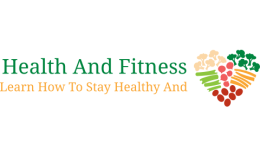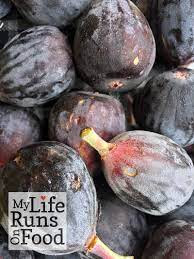IN THIS ARTICLE
How Your Body Uses Iron in Food Iron-Rich Foods How to Get More Iron From Your Food Spinach may not give you superhuman strength to fight off villains like Popeye's nemesis Bluto, but this leafy green and other foods containing iron can help you fight a different type of enemy -- iron deficiency anaemia health and fitness
. Iron-deficiency anaemia, the most common form of anaemia, is a decrease in the number of red blood cells caused by too little iron. Without sufficient iron, your body can't produce enough haemoglobin, a substance in red blood cells that makes it possible for them to carry oxygen to the body's tissues. As a result, you may feel weak, tired, and irritable. About 20% of women, 50% of pregnant women, and 3% of men do not have enough iron in their bodies. The solution, in many cases, is to consume more foods high in iron. health and fitness
1)How Your Body Uses Iron in Food.
2)Iron-Rich Foods
Very good sources of heme iron, with 3.5 milligrams or more per serving, include: 3 ounces of beef or chicken liver 3 ounces of mussels 3 ounces of oysters Good sources of heme iron, with 2.1 milligrams or more per serving, include: 3 ounces of cooked beef 3 ounces of canned sardines, canned in oil Other sources of heme iron, with 0.6 milligrams or more per serving, include: 3 ounces of chicken 3 ounces of cooked turkey 3 ounces of ham 3 ounces of veal Other sources of heme iron, with 0.3 milligrams or more per serving, include: 3 ounces of haddock, perch, salmon, or tuna Iron in plant foods such as lentils, beans, and spinach is nonheme iron. This is the form of iron added to iron-enriched and iron-fortified foods. Our bodies are less efficient at absorbing nonheme iron, but most dietary iron is nonheme iron. IN THIS ARTICLE How Your Body Uses Iron in Food Iron-Rich Foods How to Get More Iron From Your Food Very good sources of nonheme iron, with 3.5 milligrams or more per serving, include: Breakfast cereals enriched with iron One cup of cooked beans One-half cup of tofu , health and fitness
3)Good sources of nonheme iron,
2.1 milligrams or more per serving, including Breakfast: Is It the Most Important Meal? By Lisa Hill Medically Reviewed by Christine Mikstas, RD, LD on April 22, 2021, IN THIS ARTICLE Breakfast and Your Weight Why Kids Need Breakfast A Doughnut Won’t Do Breakfast kick-starts your metabolism, helping you burn calories throughout the day. It also gives you the energy you need to get things done and helps you focus at work or at school. Those are just a few reasons why it’s the most important meal of the day. Many studies have linked eating breakfast to good health, including better memory and concentration, lower levels of “bad” LDL cholesterol, and lower chances of getting diabetes, heart disease, and being overweight. It’s hard to know, though, if breakfast causes these healthy habits or if people who eat it have healthier lifestyles. But this much is clear: Skipping the morning meal can throw off your body’s rhythm of fasting and eating. When you wake up, the blood sugar your body needs to make your muscles and brain work their best is usually low. Breakfast helps replenish it. If your body doesn’t get that fuel from food, you may feel zapped of energy -- and you'll be more likely to overeat later in the day. Breakfast also gives you a chance to get in some vitamins and nutrients from healthy foods like dairy, grains, and fruits. If you don’t eat it, you aren’t likely to get all of the nutrients your body needs. Many people skip the a.m. meal because they’re rushing to get out the door. That’s a mistake. You need food in your system long before lunchtime. If you don’t eat first thing, you may get so hungry later on that you snack on high-fat, high-sugar foods. Breakfast and Your Weight Can a morning meal be good for your waistline? Some studies say yes. Researchers have found that on average, people who eat breakfast are thinner than those who don’t. That could be because eating foods with protein and fibre in the morning keeps your appetite in check for the rest of the day. But it doesn’t guarantee you’ll fit into those skinny jeans. A recent study compared weight loss among people who ate breakfast with those with didn’t. The meal didn’t make any difference. If you’re dieting, don’t think cutting calories by skipping the meal will help. Studies show that most people who lose weight and keep the weight off eat breakfast every day. On the other hand, you need to pay attention to what, when, and how much you eat. One study showed that people who had large breakfasts ate more during the day, health and fitness
4)Why do Kids Need Breakfast
Sometimes children don’t feel like eating in the morning, but it’s important that they do. Their growing bodies need nutrients and fuel. Kids who don’t eat in the a.m. have a harder time focusing, and they become more tired in school. They may also be cranky or restless. And it isn’t just their moods that can suffer. Their schoolwork can, too. One study showed that kids who ate breakfast had higher test scores than those who didn’t. Most children don’t get all the vitamins and minerals they need from just lunch and dinner. Kids who skip breakfast are more likely to eat junk food during the day and be overweight. One study showed that teenagers who ate breakfast every day had a lower body mass index (BMI) -- a measure of body fat based on height and weight -- than teens who never ate the meal or who sometimes did. If your youngster doesn’t want to eat in the morning at home, pack something they can have on the way to school or between classes. Opt for fruit, nuts, or half a peanut butter and banana sandwich, health and fitness
5)A Doughnut Won’t Do
You don’t need to eat a big meal for breakfast, but it’s a good idea to have something small within an hour of waking up. Even last night’s leftovers zapped in the microwave will do. Resist that pastry or doughnut, though. Your best bet is a mix of foods that have carbohydrates, protein, healthy fats, and fibre. Carbs will give you energy right away, and the protein will give it to you later on. Fibre keeps you feeling full. Try a whole-grain cereal, low-fat milk, and fruit, or a breakfast smoothie made from low-fat yoghurt, fruit, and a teaspoon of bran. Nuts or whole-grain granola bars are also easy options, health and fitness
.One-half cup of canned lima beans, red kidney beans, or chickpeas One cup of dried apricots One cup of cooked enriched egg noodles One-fourth cup of wheat germ 1 ounce of pumpkin, sesame, or squash seeds Other sources of nonheme iron, with 0.7 milligrams or more, include: One-half cup of cooked split peas 1 ounce of peanuts, pecans, walnuts, pistachios, roasted almonds, roasted cashews, or sunflower seeds One-half cup of dried seedless raisins, peaches, or prunes One medium stalk of broccoli One cup of raw spinach One cup of pasta (cooked, it becomes 3-4 cups) One slice of bread, half of a small pumpernickel bagel, or bran muffin One cup of brown or enriched rice , health and fitness
How to Get More Iron From Your Food?
Some foods can help your body absorb iron from iron-rich foods; others can hinder it. To absorb the most iron from the foods you eat, avoid drinking coffee or tea or consuming calcium-rich foods or drinks with meals containing iron-rich foods. Calcium itself can interfere. To improve your absorption of iron, eat it along with a good source of vitamin C -- such as orange juice, broccoli, or strawberries -- or eat nonheme iron foods with food from meat, fish, and poultry group. If you have trouble getting enough iron from food sources, you may need an iron supplement. But speak to your healthcare provider about the proper dosage first and follow their instructions carefully. Because very little iron is excreted from the body, iron can accumulate in body tissues and organs when the normal storage sites -- the liver, spleen, and bone marrow -- are full. Although iron toxicity from food sources is rare, deadly overdoses are possible with supplements. health and fitness
health and fitness,health and fitness tips,health and fitness tips for women,health and fitness tips in English,make health and fitness tips best,health and fitness topic, health and fitness in English







No comments:
Post a Comment
Thanks for the comment,